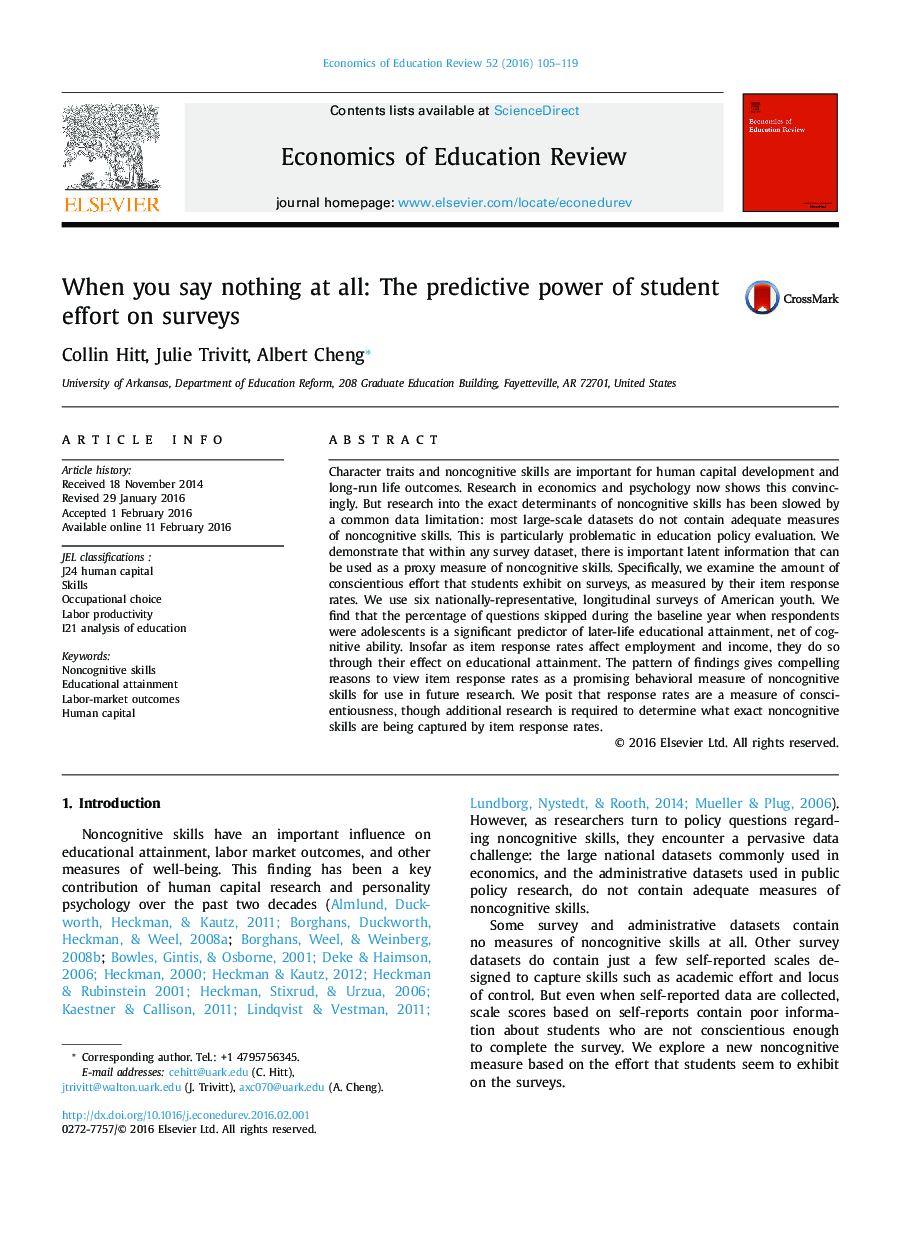| کد مقاله | کد نشریه | سال انتشار | مقاله انگلیسی | نسخه تمام متن |
|---|---|---|---|---|
| 354257 | 1434811 | 2016 | 15 صفحه PDF | دانلود رایگان |
• We propose a behavioral measure of noncognitive skills: survey item response rates.
• We validate this measure in six large-scale, longitudinal data sets of adolescents.
• Base-year response rates predict later-life outcomes, net of cognitive ability.
• Response rates positively correlate with educational attainment.
• Attainment mediates the relation between response rates and labor-market outcomes.
Character traits and noncognitive skills are important for human capital development and long-run life outcomes. Research in economics and psychology now shows this convincingly. But research into the exact determinants of noncognitive skills has been slowed by a common data limitation: most large-scale datasets do not contain adequate measures of noncognitive skills. This is particularly problematic in education policy evaluation. We demonstrate that within any survey dataset, there is important latent information that can be used as a proxy measure of noncognitive skills. Specifically, we examine the amount of conscientious effort that students exhibit on surveys, as measured by their item response rates. We use six nationally-representative, longitudinal surveys of American youth. We find that the percentage of questions skipped during the baseline year when respondents were adolescents is a significant predictor of later-life educational attainment, net of cognitive ability. Insofar as item response rates affect employment and income, they do so through their effect on educational attainment. The pattern of findings gives compelling reasons to view item response rates as a promising behavioral measure of noncognitive skills for use in future research. We posit that response rates are a measure of conscientiousness, though additional research is required to determine what exact noncognitive skills are being captured by item response rates.
Journal: Economics of Education Review - Volume 52, June 2016, Pages 105–119
